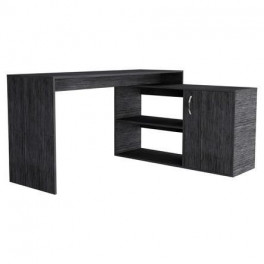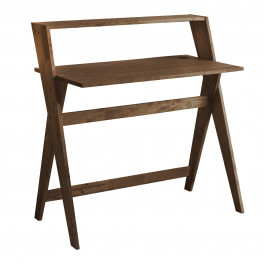Walking out to your backyard, you step onto your wood deck to take in the fresh morning air. As your foot hits the board, you hear a creak, and look down. Then you notice the wear of the paint and how beat up the entire deck looks. How did it get like this?
The last time it looked brand new was when you installed it last summer, and the weather and get-togethers have taken their toll. It’s time to give your deck a facelift and give it a fresh coat of paint or something to improve the wood. You do some research and find out sealing it is an excellent option for your deck. But what is deck sealer? How much does it cost to seal a deck?
What is deck sealer?
Deck sealer is usually a transparent finish, added to wooden decks that lock out moisture and reduces water retention. The purpose of the sealer helps protect the wood from weathering quickly, from constant exposure to rain, snow, and other elements. If left untreated, the deck could come victim to fungal growth or wood root, compromising the integrity of the structure. Sealer is for those who prefer the color and look of the wood on their deck. An easy apply option that doesn’t require a high level of expertise.
The types of sealant that you can choose from for your application is either oil-based or water-based.
Oil-based sealers are penetrating, coating, or a combination of both. As their names would imply, they will either penetrate the wood or sit on top, coating it instead. A combination one is considered a coating sealer, with a ratio of 10% coating and 90% penetration, or a 100% coating.
Water-based sealers are also coatings and clean up easily with soap and water. Perfect for the DIYer, but hard to work with as they are less resistant to wear and tear. The water-based sealant does have the benefit of being environmentally friendly.
Stain vs. Sealer
Stain and sealer are often confused for one another since they have many similarities but have different uses. Staining when applied to wood also creates a barrier, like a sealer, but affects the woods pigmentation, and physically changes the color. Along with the water barrier, you also gain protection from UV rays.
For those who desire a darker wood with no paint, deck staining is a great option. This treatment of your wood is more expensive than sealer and will require a professional for the application.
When should I seal my deck?
For new decks, the application for sealer should be immediate after construction, if not in 1-2 weeks afterward. The sooner it's applied, it reduces the chance of UV damage to the wood and allows for the most natural look intended.
For older decks, a healthy reapplication is every one, two, or even three years, depending on your usage and location.
For those in high humidity areas, near beaches or areas like Arizona with lots of sun, a yearly application is required. Compare that to those in the North who experience snow, and have less sun during the year, two or three years between applications is acceptable. Usage of the deck can also play a key role in when the next application is needed.
How much does it cost to seal a deck?
On average, the rate for hiring a professional to seal your deck goes between $900 to $1,400. Though this job doesn’t require a lot of equipment, it does take a lot of labor to get the project done to quality standards. Some factors that influence this price is the material, prep needed, and the actual labor itself.
For material, this could vary in price depending on what choice of sealer you want to go with and ranges between $20 to $50 per gallon. The cost or prep work falls into a variety of other jobs to prepare the space from cleaning to minor repairs.
Moving furniture would be the first step taken in the cleaning and prep process for sealing. Most professionals offer a flat fee and, depending on how many and how heavy, could range between $25-$50.
After moving any furniture, the next step is to clean the area by using a power washer/ pressure washer. A basic level refinishing like this is usually included with your service and if separate goes between $0.50 to $1.50 per square foot. Make sure to ask your contractor if this service is included or not.
Sanding is an optional step, but highly recommended for those with older decks and resealing from paint or stain. The purpose of sanding is it to remove any stubborn paint or stain left behind from power-washing/ pressure washing. Otherwise, the new application of sealer will not be able to penetrate the wood.
If only adding the sealer, skip the sanding step as the new layer will lay on top of the old one.
For decks with railing, this opportunity is perfect to smoothen out any bumps or rough surfaces from wear and tear.
Repair work would be the final step in the preparation process and will go over the whole deck, fixing any outstanding issues. These issues can vary but usually cover anything that has compromised the integrity of the deck to secure items to where they belong.
Example, for decaying or rotted wood, a professional could fix it for you with an additional charge, since this goes out of bounds of basic sealant prep. Other times it only requires sinking nails back into the deck surface that popped up, due to the shrinking and expanding of the wood. Most repairs will focus on securing the deck to proper order before the sealant application.
Deck repair is a slippery slope and ranges from $200 to $4,500 on average depending on the task. For situations dealing with a compromised structure, you will require a general contractor.
After prep work, the deck will need to sit for 24 hours so that it is completely dry. If not completely dry the sealant will trap any reaming moisture into the wood, causing mold and mildew to grow in a protected environment.
The staining, or re-staining, application on average costs $2-$3.50 a square foot, but can vary depending on the area. Applying the sealant is done a variety of ways, each one to fit the area better. For the floor, a sponge mop applicator is used to make an even coat around the boards. Others applicators allow you to store the sealant in a tank connected to it that also reaches between boards.
For banisters and railings, a sponge or roller is used for mobility and to get into gaps.
Can I seal a deck myself?
Yes. This task is not impossible to do on your own, and equipment can be bought or rented for a reasonable price.
|
Equipment |
Price |
|
Buy/ Rent Power Washer |
$100-$200 or $40 per hour to $70+ per day |
|
Buy/ Rent Sander |
$14-55 or $12 for 4-hours to $17 per day |
|
Buying a Hammer |
$6-$25 |
|
Buying a Nail Setter |
$3-$10 |
The time frame to complete this job can go between a day or two, perfect for a weekend DIY project.
Either way, you have an updated deck that is ready for another year or two before another coat is needed. Sit out and enjoy the sunrise or sunset, enjoy the backyard and start up the grill, or have some friends over. Then hear them compliment you on your deck and how nice it looks.





































